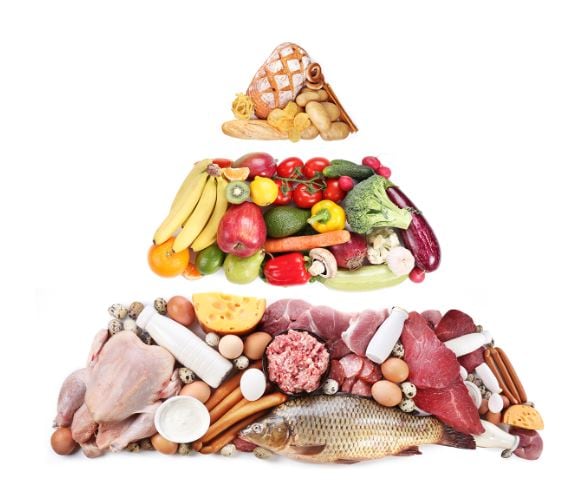Measuring satiety is fraught with difficulty. There is a biomarker that may be measured—leptin, sometimes called the ‘satiety-starvation hormone.’ Leptin insensitivity has been associated with genetic factors, which could play a role in some cases of morbid obesity. But for the average consumer, the manipulation of leptin levels as it relates to actual sustained weight loss remains controversial.
Difficulty of researching satiety
For much weight management research, measuring the effects of satiety is problematical because it trends over into behavioral research, which is sensitive to bias and the influence of external factors.
“The drawback of behavioural research is that it is time-consuming and costly so cannot be used in the large population-based samples that are needed to detect small effects and demonstrate generalizability. ‘Self-conscious’ overweight adults may also modify their eating behaviour when being observed by researchers,” argued researchers associated with the University College of London.
There is also the issue that few observers believe consumers fully understand the approach as it relates to weight management products.
“There is currently insufficient evidence to substantiate the most likely candidates for satiety claims and few claims have yet been approved. There is little evidence consumers understand such claims. Consumer knowledge of the science is limited. Consumers seem more responsive to the promise of weight control solutions than knowledgeable about how to use them in the context of effective weight control behaviours,” argued a researcher from the University of Leeds.
Author: Approach has a solid underpinning
But even with those drawbacks, interest in the approach is rebounding, said Jyl Steinback, a trained homeopathy therapist and author of more than a dozen cookbooks, Steinback is also head of a nonprofit called ShapeUpUs.org, which has a mission of tackling childhood obesity.
Steinback said despite the questions surrounding the accumulation of scientific evidence connecting satiety promotion to sustained weight loss, the approach just makes practical sense. It can work, but people are complex machines, not amenable to easy solutions and prone to throw wrenches into the works, Steinback said.
“People don’t eat just when they’re hungry. They eat out of emotion. They are full, but they aren’t aware of it,” she said.
Adhering to the satiety index
One thing that can definitely help is to eat foods high on the satiety index. Steinback said it’s a measure developed more than a decade ago by Australian researcher Susanna Holt, PhD of the University of Sydney. Holt fed a fixed amount (240 calories) of different foods to participants who then ranked their feelings of hunger every fifteen minutes and were allowed to eat freely for the next two hours.
Holt used the satiation value of a slice of white bread as the baseline value for her system, pegged at 100 on the scale. Of all the foods she tested, potatoes were the most satisfying, measuring 323 on the scale.
Revisiting the concept in light of plant-based trend
Steinback wrote a cookbook in 2005 based on the idea called “Fill Up. Slim Down.” She believes it’s time to revisit the idea in light of the current emphasis on plant based nutrition. Steinback’s nonprofit has developed an education model on satiety and plant based foods to be used in elementary schools, and she’s planning a new cookbook along those lines, too.
“Filling foods tend to be high in protein, high in fiber, high in volume. And they’re generally low in energy density,” Steinback said.
While Steinback has a whole food first approach to nutrition, companies in the dietary supplement industry have also stepped up to the plate to promote the satiety benefits of their ingredients.
Hard research on hard-to-research subject
One of these, Taiyo International, has done a significant amount of research on its Sunfiber hydrolyzed guar gum prebiotic/fiber ingredient. Taiyo’s technical sales manager, Derek Timm, PhD, said many of the popular diets of the day stray away from Steinback’s holistic whole food approach and advocate for eating styles that exclude a number of foods, especially those with significant amounts of carbohydrate, which might make getting sufficient fiber difficult without adding a supplement.
“Taiyo is pleased with Sunfiber soluble prebiotic fiber's clinically proven ability to promote satiety and help reduce the postprandial glucose peak after a meal. There are many diets today like keto, paleo and low carb that make it more challenging to attain enough daily dietary soluble fiber, and therefore the satisfying feeling of ‘fullness’ after a meal that fiber provides. We are happy to offer Sunfiber soluble prebiotic fiber as a supplement or in food and beverage formulations to help achieve these benefits,” he said.
Timm pointed to research Taiyo has done specifically on the satiety benefits of the ingredient. Studies have shown that it significantly impacted levels of postprandial hyperglycemia, hyperlipidemia and incretins metabolic hormones over time in both healthy and glucose intolerant subjects. Other research on the ingredient has shown clear effects on appetite control, he added.
Weight Management Webinar
NutraIngredients-USA Deputy Editor Hank Schultz will be joined by industry experts Guru Ramanathan, PhD, Tim Avila, Hector Lopez MD and attorney Justin Prochnow for the Weight Management 2020 Webinar scheduled for January 29. The panel will delve into the science behind the most popular ingredients, where the overall market is going, and what the salient regulatory issues are. For more information and to register for this FREE offering, visit the event homepage.




